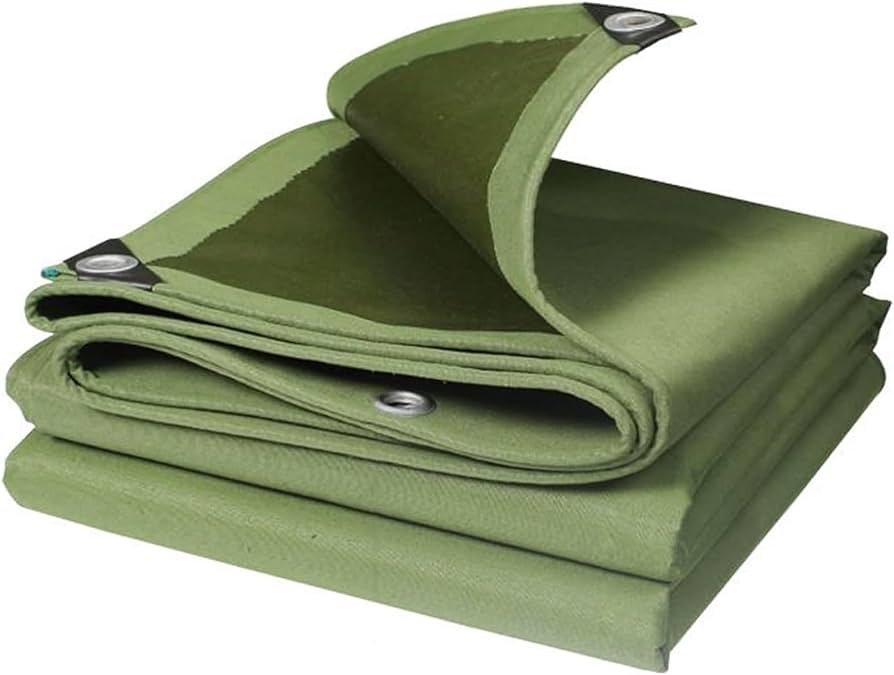Common Causes of Tears and Holes in Canvas Tarps
Waterproof Tarpaulin Sheet is oftentimes presented to various natural circumstances that can damage the fabric over the long run. The most common causes of tears and holes in canvas tarps include:
Prolonged UV light exposure:
Canvas isn’t so strong as other heavy-duty tarpaulin fabrics when presented to the sun’s beams for expanded periods. UV damage can separate strands and cause the material to corrupt more rapidly.
Weather damage from rain and wind:
Solid winds and rain can put weight on canvas that causes small scratches or penetrates to spread into larger tears. Overlapping folds and reinforced creases assist with preventing this.
Improper handling and storage:
Overlap and wrinkles in the fabric from Canvas Tarpaulin improper rolling or stacking prompts shortcoming points where tears can happen more without any problem. Rucking or scuffing of the material from dragging it across rough surfaces makes a comparative difference.
Damage from tools/equipment use:
Scratches, penetrates and scraped spots caused while the tarp is in use as a defensive covering inevitably lead to larger tears or holes long term in the event that not tended to. Materials being covered can have sharp edges.
Identifying the Right Materials for Canvas Tarp Repairs
The way to making successful and enduring repairs to tears and holes in canvas tarps is using the appropriate repair materials. Here are a few decent choices to consider:
Adhesive patch materials
like conduit tape, vinyl tape, or reinforced ripstop fabric tape can be used for small holes or scratches. Pipe tape gives great strength however may leave buildup. Vinyl tape is cleaner to apply and eliminate.
Sewing kits
that include, serious areas of strength for needles, and a drill or leather punch take into account reinforcing larger repairs without relying entirely on adhesive patches. Nylon or polyester string opposes weathering great.
Reinforcement fabric
produced using solid ripstop nylon is great for completely covering and reinforcing areas with numerous holes or large segments of missing fabric. It forestalls further deterioration.
Preparing the Tarp for Repair
Before making any repairs, it is important to set up the canvas tarps material appropriately. This involves:
Cleaning the repair area – Use a brush or fabric to eliminate any soil, grime or trash from the area surrounding the tear or hole. This considers a perfect surface for adhering patches.
Sanding or buffing rough edges – Rough or fraying fabric edges ought to be smoothed out slightly using fine-coarseness sandpaper or a fabric brush. This forestalls further unraveling.
Trimming away loose or frayed fabric – Using sharp scissors, trim back any material that is not generally very much appended to the tarp. Leave around a 1/4 inch of sound fabric by and large around the hole for reinforcement patches to stick to.
Small Hole/Tear Repairs Using Adhesive Patches
While repairing small holes or tears in canvas tarps using adhesive patches, it is important to require your investment and cautiously follow each step of the cycle.
Selecting and Preparing the Patch
Begin by precisely measuring the hole and cutting a patch that is no less than 1/2 inch larger all around, for adequate cross-over. Reinforced fabric tape works very well for its mix of solidarity and adaptability. Eliminate around one inch of the backing paper from the adhesive side of the patch, folding it over on itself to hold it far removed.
Centering and Applying the Patch
Then leisurely and tenderly focus the patch straight over the sanded and cleaned tear. Use your fingertip to streamline any wrinkles or air rises in the patch material itself. Once focused correctly, you can begin adhering it down. Strip off three to four inches of the remaining backing paper, being wary not to permit the recently presented adhesive to move. patch is completely stuck.
Finishing the Repair
To finish, use your fingernails or the finish of a coin or spoon handle to polish the extremely external edges of the patch down safely. Then flip the tarp over and rehash the whole interaction on the posterior for extra reinforcement and strength.
Large Hole/Tear Repair Using Reinforcement Fabric and Sewing
While repairing larger tears or holes using reinforcement fabric and sewing, it is important to painstakingly follow each step:
Selecting and Preparing Materials
Begin by choosing a strong ripstop nylon or polyester patch that is something like 1-2 inches larger than the hole on all sides. Press the patch smooth with an iron and use fine-coarseness sandpaper to feather any rough cut edges on the tarp material.
Positioning the Reinforcement
Lay the pre-arranged patch right side down over the repaired area. Use rust proof pins each 1/2 inch or so to tack it set up by and large around the circuit safely.
Sewing the Repair
Set up a sewing machine with a tight crisscross fasten or hand sew using a backstitch whenever liked. Sew intently around the whole pinned edge, backstitching toward the beginning and finish points. For additional strength, sew a second line of join 1/4 inch inside the first.
Finishing the Sewn Repair
Eliminate pins and secure off or join any loose string closes on the rear. Trim abundance reinforcement fabric near the crease line. Finally, apply crease sealant liberally to waterproof the lines completely.
Conclusion
In conclusion, appropriately repairing tears and holes in canvas tarps requires selecting the right materials for the gig, cautiously preparing the fabric surfaces, and employing sound procedures for reinforcement. Small scratches can be patched rapidly and effectively with adhesive tape, while larger damages demand reinforcing with fabric and tough hand or machine stitching.
Read More: https://onlinespost.com/
